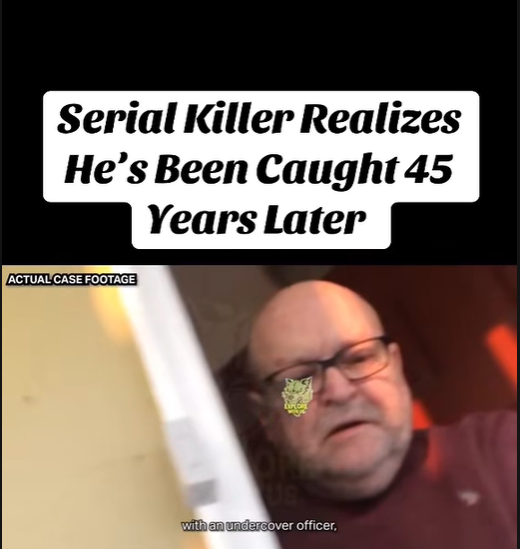The year was 1978, a time when rotary phones rang in homes and disco ruled the airwaves. In a quiet Midwestern town, where neighbors waved from porches and kids played freely until dusk, a shadow moved unnoticed. A predator, cloaked in normalcy, began a reign of terror that would leave a trail of at least 17 vanished souls, their stories buried in shallow graves and forgotten case files. For 45 years, this figure walked free, blending seamlessly into society—a regular at the local diner, a familiar face at community picnics—while the truth lay hidden, like a blade tucked beneath a coat. But in 2023, a single discovery shattered the illusion, leading to a chilling moment of realization that would end one of the longest manhunts in history.
It began with a string of disappearances, each one eerily similar yet dismissed as unrelated. A young woman hitchhiking on a lonely highway, last seen climbing into a nondescript sedan. A bartender who never made it home after closing up. A drifter whose absence barely raised an eyebrow. The killings spanned states—Ohio, Indiana, Illinois—each body left in remote fields or wooded ravines, stripped of anything that could point to the culprit. Investigators noted patterns: strangulation, no signs of struggle, bodies posed with an almost ritualistic care. Yet, with no witnesses and forensic science in its infancy, the cases grew cold, relegated to dusty boxes in police basements.
The killer was meticulous, a ghost who thrived on invisibility. By day, he punched a timecard at a factory, his hands calloused from honest work, his smile disarming to coworkers who never suspected the darkness behind it. At night, he hunted, driven by urges he never explained, not even to himself. He kept mementos—a bracelet, a scarf, a single earring—locked away in a secret compartment, each item a silent testament to his crimes. He married, raised children, and settled into a life so ordinary it was impenetrable. The world moved on, and so did he, aging into a retiree who swapped stories of fishing trips over coffee, his past buried deeper than his victims.
Decades passed, and the case faded into obscurity, a footnote in true crime circles. But in 2023, a rookie detective, assigned to a cold case unit, stumbled across a digitized file from one of the old crime scenes. A partial DNA sample, overlooked in the ‘70s due to primitive technology, now glowed like a beacon in modern databases. She uploaded it to a genealogy site, a long shot that paid off when it matched a distant relative. The trail led to a retiree in a Florida golf community, living out his days under palm trees and sunshine. The detective’s pulse quickened as she cross-referenced sketches from old witness reports—they matched the man’s face, weathered but unmistakable.
A raid was planned. On a humid morning, as he lined up a putt on the ninth hole, officers swarmed the green. They found the hidden stash in his home: a locked box containing the trophies, each tied to a victim listed in a coded journal, its pages yellowed but damning. The entries didn’t stop in the ‘70s—hints suggested more killings, some as recent as the early 2000s, potentially doubling the body count. As handcuffs clicked around his wrists, the old man’s face drained of color, his voice a hoarse whisper: “I thought I’d gotten away with it.” For the first time in 45 years, the hunter became the hunted, his carefully constructed life collapsing under the weight of truth.
Now behind bars, he sits in a cell, the echoes of his crimes louder than ever. The case has sparked debates—how did he evade justice for so long? Was it cunning, luck, or a system too slow to catch up? Detectives are combing through his journal, linking it to unsolved cases, while families of the missing finally have answers, though closure remains elusive. The story serves as a stark reminder: no matter how long the shadows stretch, the past has a way of catching up. What other secrets lie hidden, waiting for their moment to surface?
